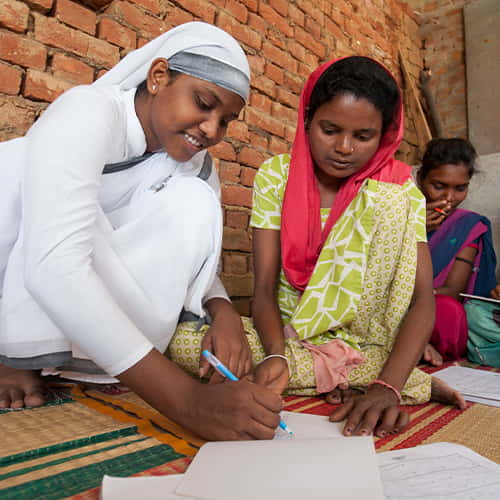Numeracy Definition
A numeracy definition provided by National Numeracy is “the ability to understand and use maths in daily life, at home, work or school.”1
It has nothing to do with whether a person can perform complex skills or advanced math but whether the person can use basic math in daily life. It is sometimes labeled as “mathematical literacy.” For example, a mathematically literate person can give correct change, increase a recipe, calculate a percentage or how much to tip, set up a budget, measure medicine doses, and understand a graph used in the news. A numeracy definition is about understanding math and making good decisions with numbers.
Numeracy is often used at work. For example, someone working at a salon needs to calculate the formula for hair dye. A construction worker needs to measure building materials. A contractor needs to create an estimate for how much to charge for a construction job. A chef needs to know how many portions to make. A nurse needs to figure how much medicine to give a patient. According to National Numeracy, every job involves math!2
How does the numeracy definition impact those who never attended school or learned numbers? In the developing world, lack of numeracy creates many barriers. Adults are often taken advantage of in the markets, unable to calculate prices. They are unable to understand contracts or agreements for employment or housing. They can’t understand medical dosing or help their children with their homework. The inability to understand numbers comes with great cost.
Over 250 million women in Asia are illiterate in both math and reading. Many women long to learn, but the resources are unavailable to them or they seem unattainable. This issue isn’t just in the developing world, though. In the United States, there are 43 million adults who can’t read, write and do basic math above a third-grade level.3
As a child in Asia, Rella missed the opportunity to go to school. She grew up in an impoverished family, and her parents needed her to stay home and care for her younger siblings. She reached adulthood and was unable to read, write or do basic math.
Her husband, Rahm, was illiterate too, and this dual illiteracy caused many struggles in their life. They couldn’t read legal documents, signs and labels.
“Rella’s lack of education extended to math as well. Without basic math skills, Rella could not count out money whenever she purchased anything from the market. She had no idea how much money she spent and had to seek help from someone else. With every trip to the market came confusion and discouragement.”5
When a Gospel for Asia team of women missionaries began a free literacy class in her community, Rella joined in. She received a literacy book and set out to learn what the squiggles on the page meant. She soaked up the lessons and enjoyed her new knowledge. Five months later, Rella could read and write and was at the top of her literacy class!
Now in the evenings, Rella has begun teaching her husband how to read and write too. She can also help her children with their schoolwork. She can now read street signs, understand literature, food labels, job listings and more. She can understand the prices in the marketplace too. Literacy is breaking the cycle of poverty in Rella’s family.
Click here, to read more about this article.
Click here, to read more blogs in Gospel for Asia.Com


Comments
Post a Comment